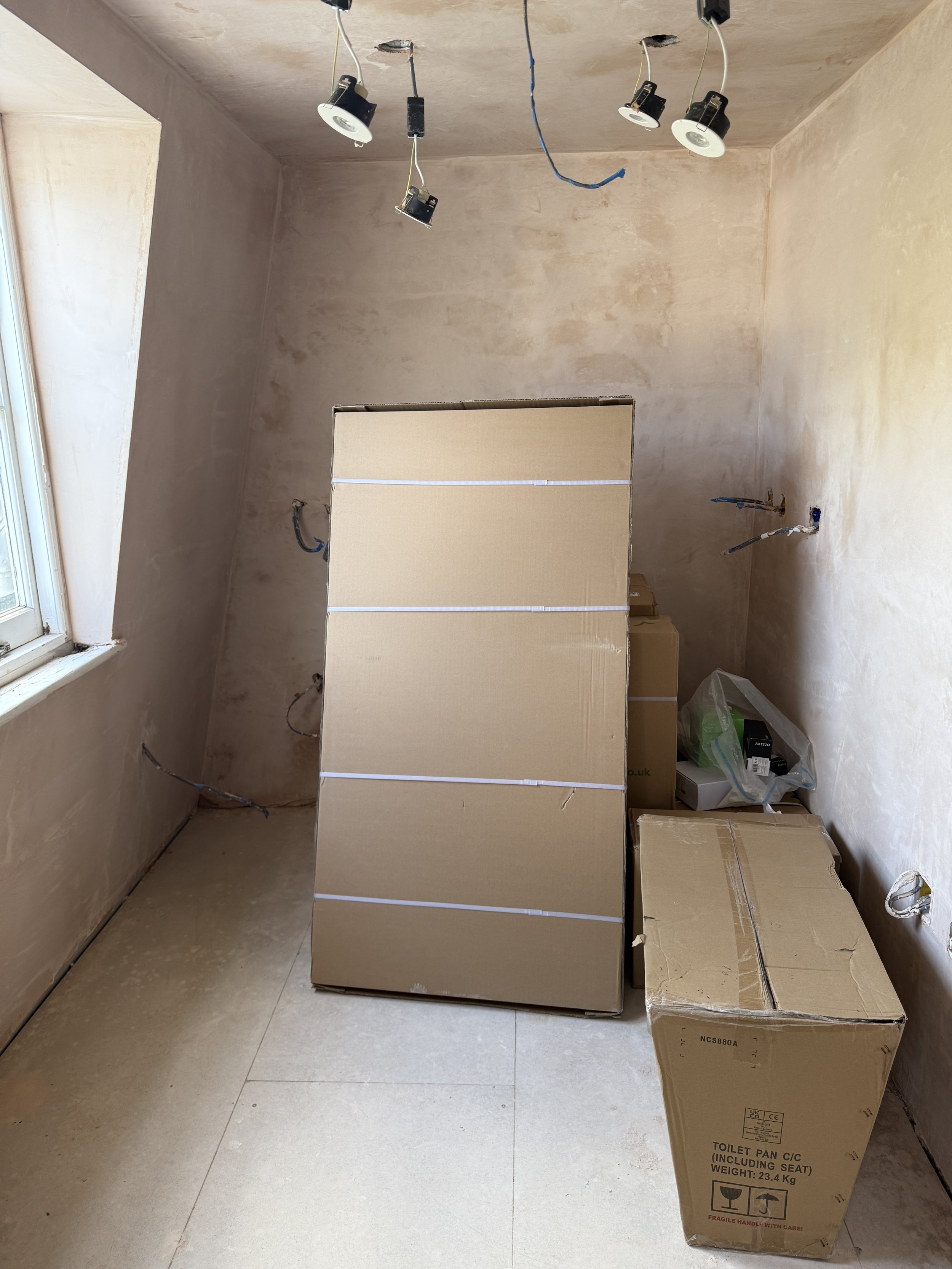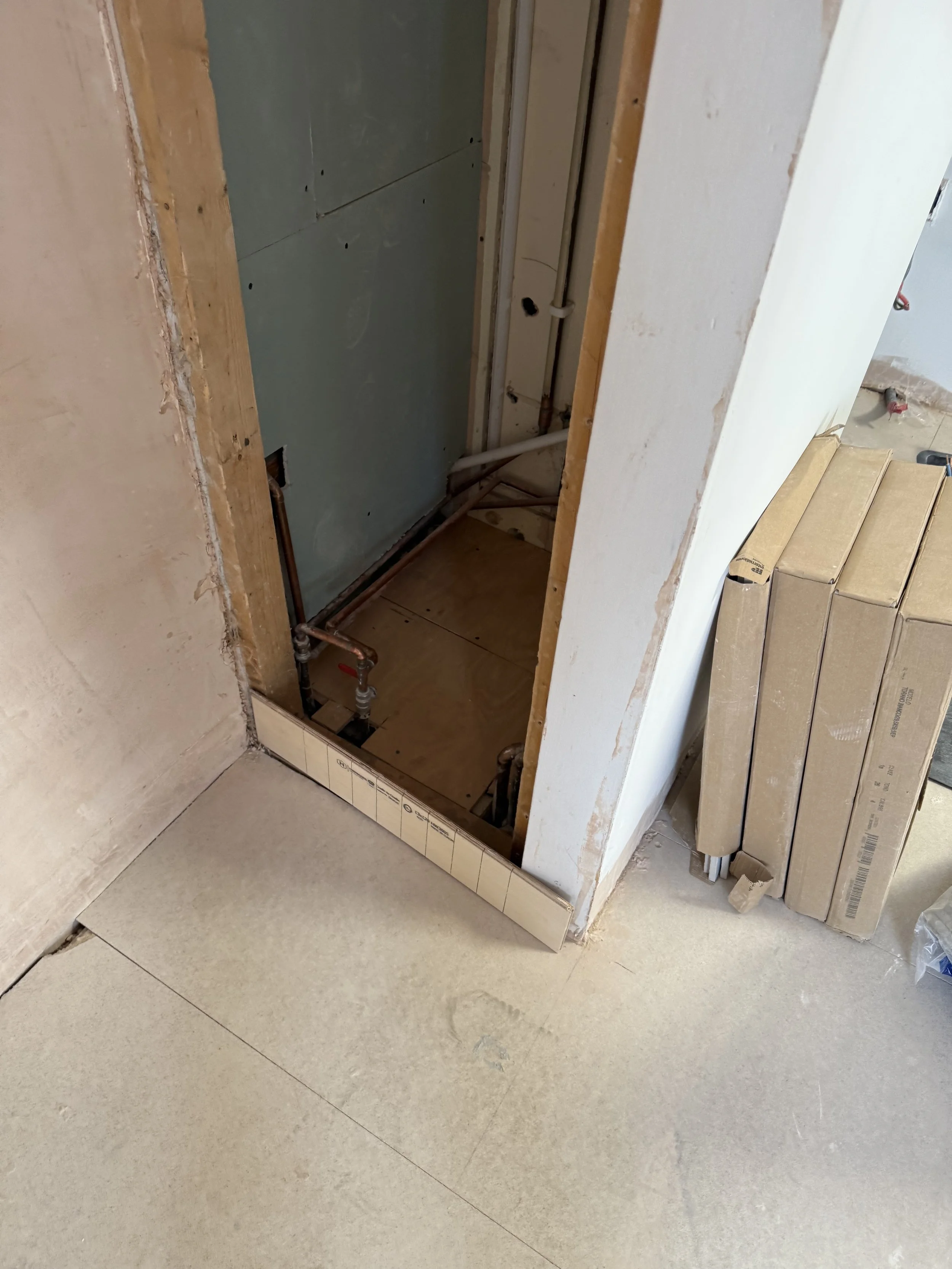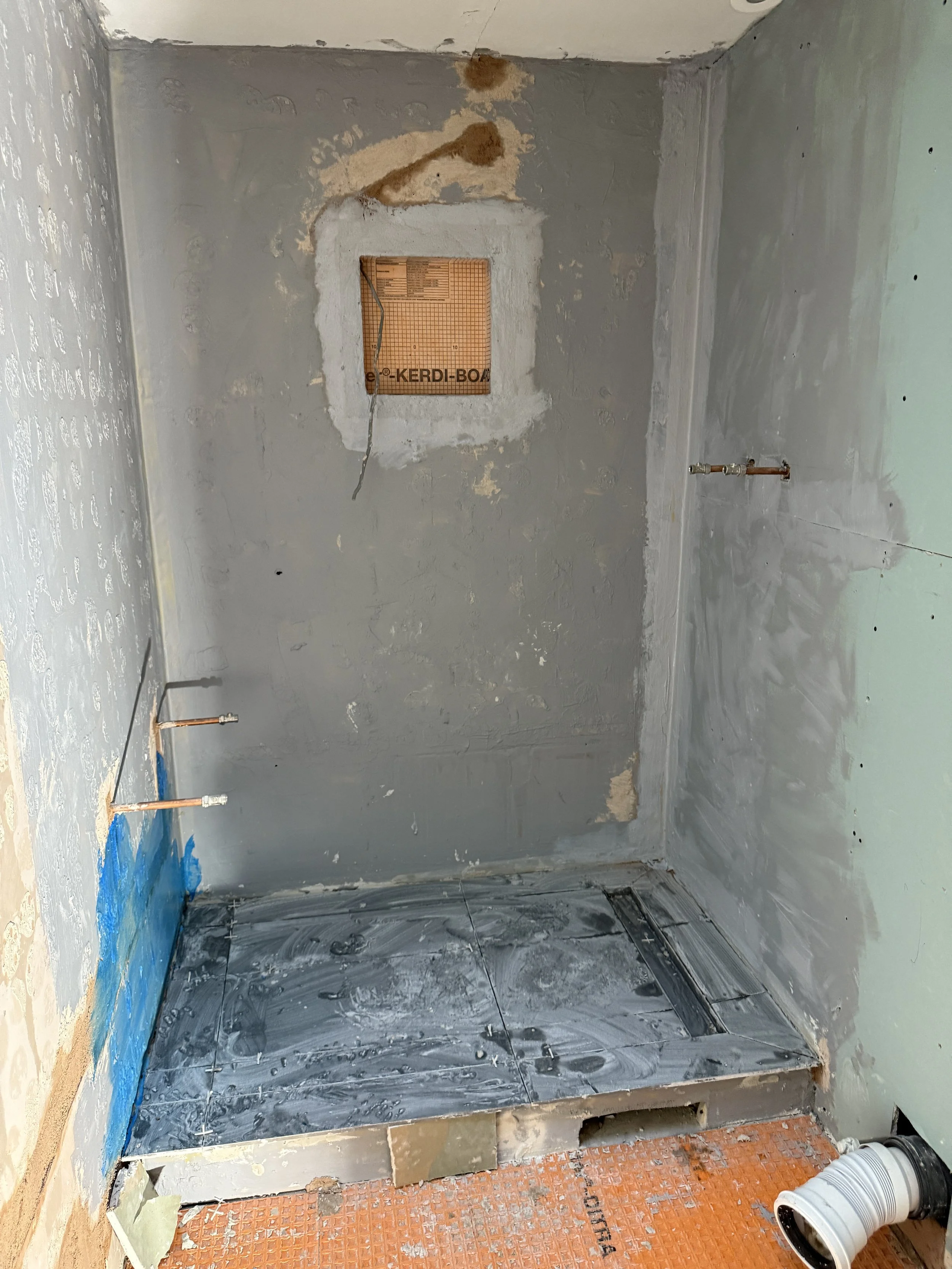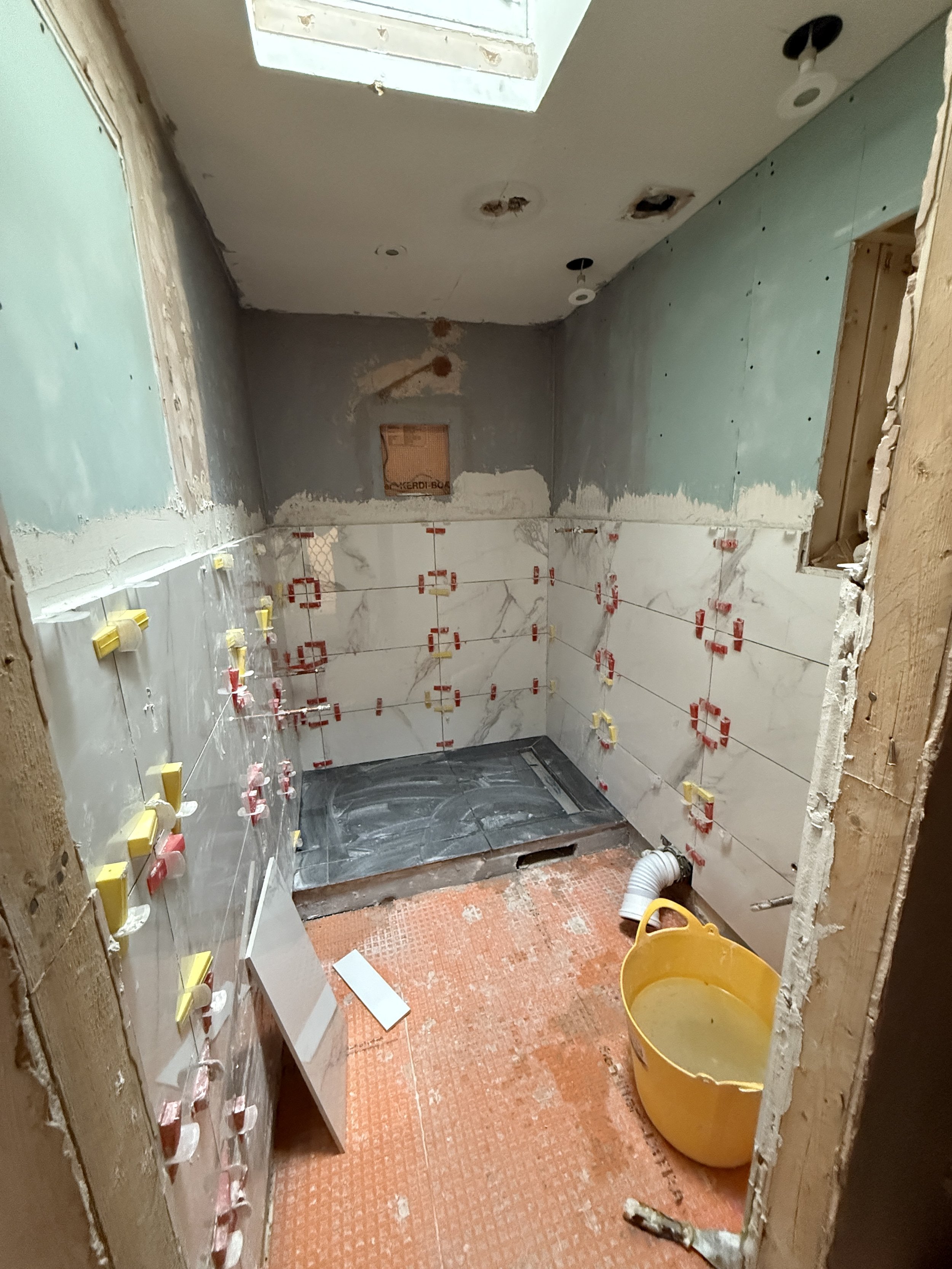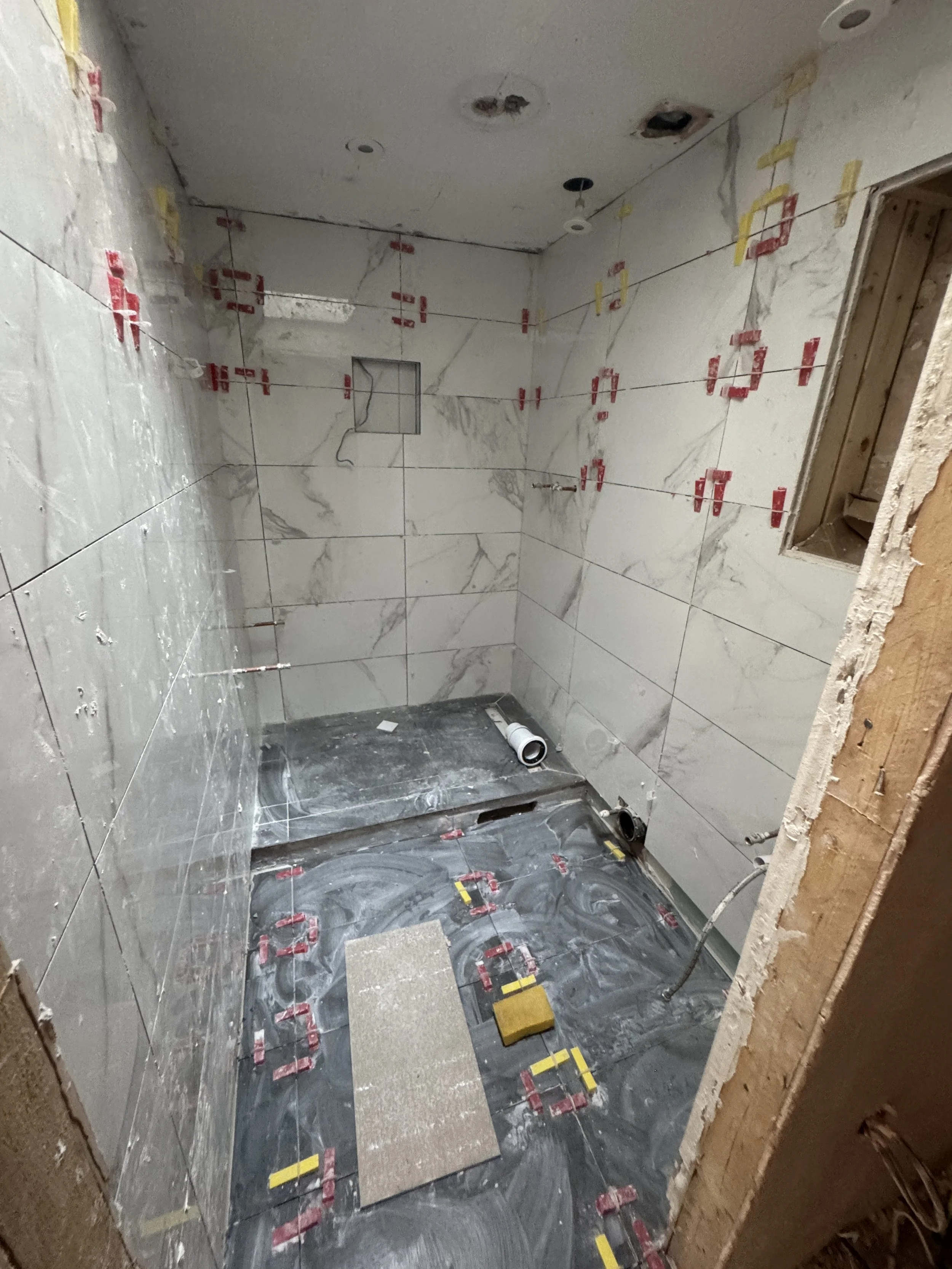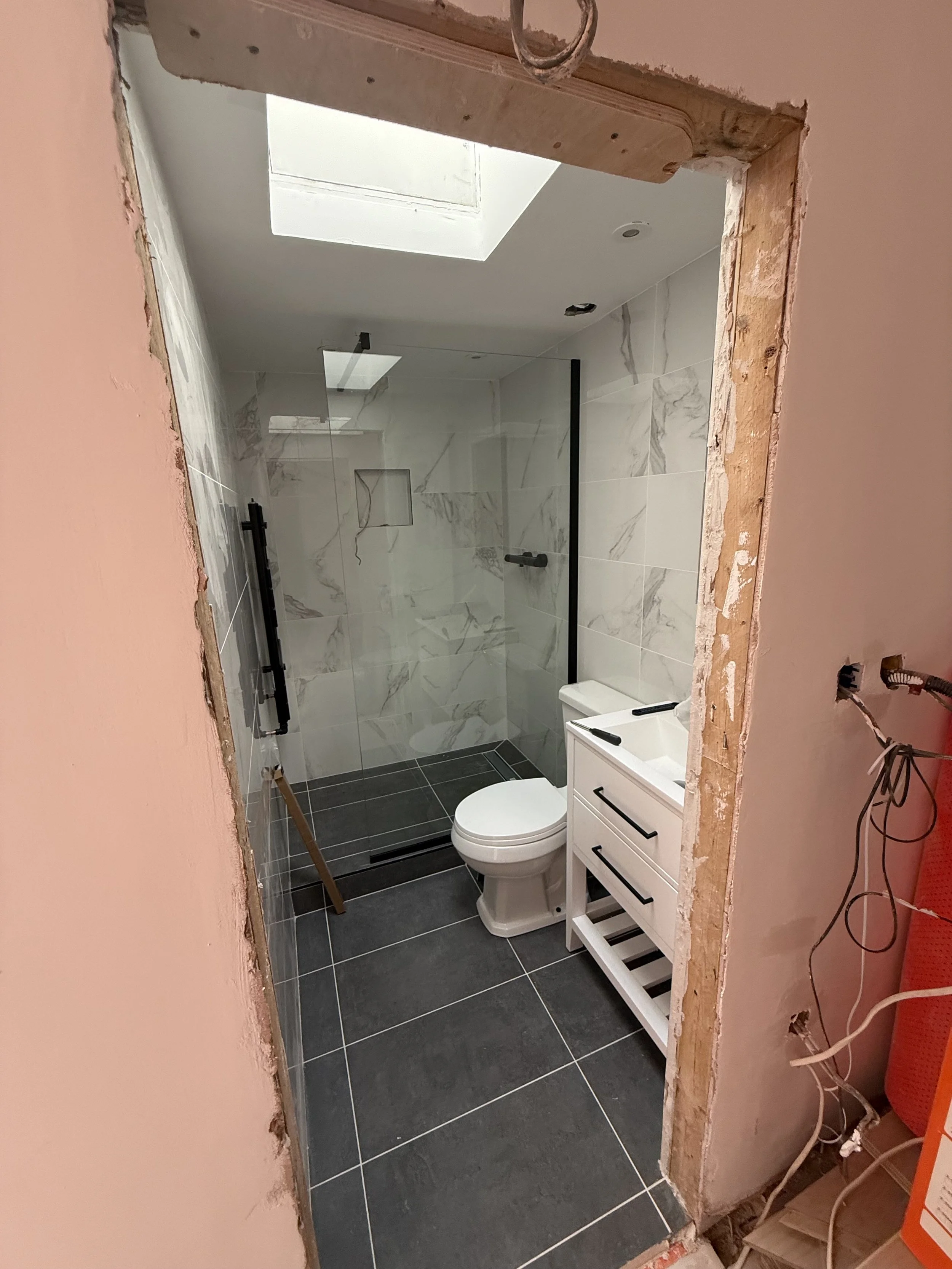Part 3: Rebuilding Momentum — Early Challenges and Midway Frustrations
By the time I reached the rebuilding phase of my London pied-à-terre renovation, the reality of managing a multi-city life alongside a complex project had truly set in. Having lived between Los Angeles, Vancouver, Sydney, and London, finding stillness and control became an art form — and this renovation would put every ounce of patience, organization, and resilience to the test.
Lessons in Persistence and Trust
The renovation started with optimism: a trusted contractor had been selected, timelines set, and materials sourced. But soon, it became clear that not everything would go as planned. Mismanagement, communication gaps, and conflicting expectations quickly became the reality I had to navigate.
Realising Something Wasn’t Right
It began with complaints about the communal stairs and hallway leading to the apartment not being properly covered, and noise being made outside regulated times. But the biggest red flag appeared just a few days into the project: a language barrier and random people on site who hadn’t been briefed in person or weren’t aware of the carefully planned details. I found myself communicating constantly through Google Translate, making repeated calls to the company director/site manager to clarify what was being done and ensure instructions were relayed correctly — including making sure each task dovetailed with other elements of the project. My instincts immediately signaled that something was amiss, and it became clear that progress might not match the vision I had worked so hard to establish.
First Week Decisions and Milestone Payments
By the end of the first week on site, it became clear that the contractor’s own milestone plan — the payment schedule and deliverables they had drawn up — was creating additional pressure rather than security. They requested the second instalment at the end of week two, yet most of the line items in that milestone were incomplete, or they claimed couldn’t be achieved at that stage. This felt contradictory and frustrating, as the plan had been created by them and was meant to guide progress. With the clear warning that work would stop without payment, I reluctantly paid the next instalment to keep the project moving. Simultaneously, I sought advice from my solicitor to understand my rights, ensuring that any future steps would be informed, measured, and legally grounded. Even amidst this early chaos, I leaned on my project management skills — tracking timelines, documenting communications, and prioritizing tasks — to maintain some control over a situation that was rapidly spiraling beyond my expectations.
Escalation and Contract Limitations
As the weeks progressed, miscommunication only escalated. Rules set by the building were ignored, and what had been agreed in emails and prior discussions increasingly fell outside the scope of the contractor’s understanding or willingness to execute. Explicit details I had provided for the bathroom — the lighting placement, inbuilt shower shelf, and exact finishes — were not reflected in the contract, which simply stated “bathroom wetroom.” Anything beyond that basic specification was considered an additional cost. Similarly, although some insulation work was addressed, most of it became a point of contention, even though much of it was over 40 years old and clearly needed updating. After consulting a solicitor, I learned I couldn’t legally walk away unless there was a clear act of misconduct and the contractor falsely claimed the work was complete. Bad workmanship that had not been signed off as complete didn’t allow for any action. My other option was to hire a conveyor to supervise the site daily — an expense I couldn’t afford on top of everything else. This forced me to continually clarify, renegotiate, and reassess priorities while maintaining progress where possible.
Midway Frustrations and On-Site Realities
By the middle of the project, the pattern of mismanagement became more evident. I would arrive on site to find the apartment empty, often told that the next trade wasn’t available for a day or two — or given some other excuse. Initial progress, like gutting and leveling the floors, had promised swift momentum, but work now slowed drastically, with very little being executed according to the design without repeated interventions. Even elements that had been explicitly agreed upon, such as the shower shelf, were reduced to the smallest cubby hole — functional in name only, failing the original intention. Observing the site, I saw careless handling of new installations: light fixtures with spliced cables being yanked by workers’ backpacks, and the new soundproofed MDF subflooring left with pools of water, causing unnecessary damage and separation.
By weeks four and five, as I tracked unfinished tasks and the looming accommodation costs, I questioned the six-week timeline. When I reiterated that it was more important to have honest timelines than fast ones, I was told that this estimate represented both — a quick yet reliable finish. However, when I listed all remaining work, the response was dismissive: “It’s easy, leave them to it.” My instincts, honed through years of project management, signaled that relying on their word would only escalate delays and risks.


